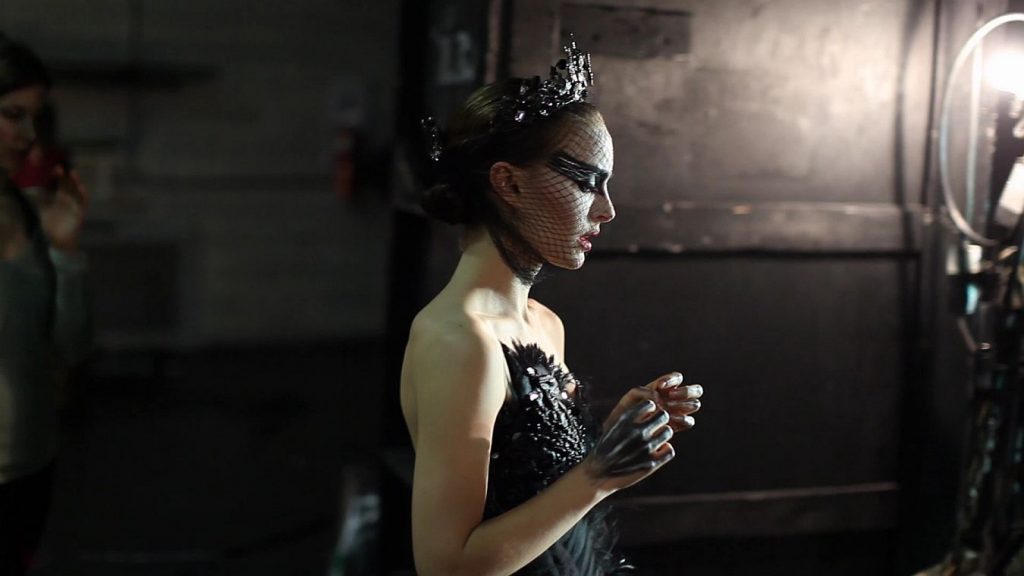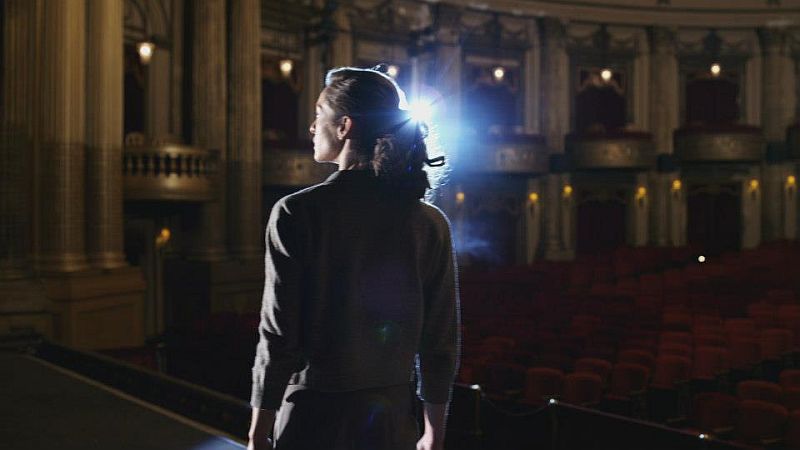Stage and Screen: Exploring Artistic Boundaries in Independent Film

“The play-within-a-play or dream within a dream....I loved seeing Virginia’s life played out on the stage. It was a like trip through time. I felt just like I was there with her.”
STAGE AND SCREEN: EXPLORING ARTISTIC BOUNDARIES IN INDEPENDENT FILM
By Shevaun Cavanaugh Kastl Image (above) from “Mourning Hour” When asked about stage and screen and what I love most about independent filmmaking, my answer is always the same. It is the expansion of the creative frontier, pioneered by brave artistic souls with a story to tell who seek to transcend the often exploitative studio system with film character and message-driven content. In an industry constricted with so much red tape, the independent filmmaker is a cinematic rebel with a cause, constantly striving for expression in a bold and innovative way. When I first came to Hollywood, I did so with the hope (as so many do!) of gaining entry into the elite network of film studio agents, film producers and filmmakers who bring us the big films widely released at a theater near you. I quickly learned that with the ever-changing media landscape, I needed to be more than a disciple of film, I needed to invent my own. And thus was my inauguration into the art of independent filmmaking. So what do we do as independent film artists? We push the proverbial envelope. Everyone has a story, many have lots. The key is how we tell them. How do we find ways of exploring, extending and opening artistic boundaries to tell our tales in a more interesting way that will bring a viewer in for the ride of their lives? I’ve often felt, as a former theatre performer and viewer, for that matter, that the stage offers an intimacy, an honesty that can’t be beat or quite replicated. It offers a third dimension in which film audience members are not simply observing the story, they are IN the story. Confidantes of the players themselves, and watching scene by scene unfold is as emotionally raw as it gets. It’s a strange dichotomy that the theatre with it’s larger than life sets and costumed players should yield such intimacy. But it’s as if something electric charges the air in the vast space surrounding the stage. We use the term “theatricality” but it’s really surrealism elevated to the level of magic.

From Black Swan The stage offers a powerful medium for storytelling. Many plays, even musicals are “adapted” for the screen with the intent of preserving the stagy feel of a live theatrical production. David Mamet’s Glengarry Glen Ross is one example. But incorporating the stage into the screen presents new and exciting opportunities to engage viewers in the lives of each character. Many variations of this exist. The “mise en abyme,” literally translated as placed into the abyss, but more liberally defined as the play-within-a-play or dream within a dream, is a technique which yields interesting opportunities for the characters themselves to self-reflect. Film script writer, film director, film actor can tap into layers that are normally inaccessible through linear storytelling. This creative device has been used by such iconic greats as Ingmar Bergman (Through a Glass Darkly) and Darren Aronofsky (Black Swan) to mirror the inner feelings and conflicts of it’s major film characters. And since independent film is so personal, we strive to create film characters as multidimensional as possible. “Black Swan” tells the story of a prima ballerina’s descent into madness. Nina Sayers, portrayed by Academy Award Winner Natalie Portman, is a ballerina whose devotion to dance and the perfection of it becomes an obsession. Aronofsky makes imaginative use of ballet scenes from Swan Lake to explore the realm of the fantastical, but most importantly, to mirror Nina’s descent into madness. Tchaikovsky’s Black Swan becomes a horrific waking dream, a third character construct of Nina’s own psychosis. The dark stage placing her into an abyss where what is real and imaginary are indistinguishable.

“The Mourning Hour” - an indie short I wrote and starred in - tells the story of a 1950’s suburban housewife and mother whose husband is tragically killed in a train accident. The shocking news sends Virginia on an emotional and psychological journey of reawakening. She finds herself traveling through two distinct spaces of time: one in her typical 1950's home with oven timers, bicycles and rubber gloves, and the other in the F.W. Walker Music Auditorium when she was a 19 year old cellist in the student orchestra. One might say that her experiences in the theatre lie somewhere between dream and delusion, speckled with fragments of memory. Still, they are very real and lead Virginia to a buried truth and resurrected love. When I wrote “The Mourning Hour,” I knew that I wanted to employ the mise en abyme technique. I was drawn to the concept of a dream-within-a-dream to reflect just how complicated such emotional distress can be in the wake of a tragic loss. In fact I wanted to give it a name and I wanted to set it on the stage: The Mourning Hour is a rare space of time experienced in the wake of shocking or traumatic news, when death and rebirth converge. Reason has no place here. Slices of a life lived are presented like scenes in a play. They are from the perspective of one film character and offer glimpses into that character’s psyche. The Mourning Hour is a trip in and through, between and over, time. For the character “Virginia,” we wanted to give the viewer an intimate association with her experience; to be as inclusive as possible as she journeys through various levels of conscious and subconscious reality and create an interplay between them. And, to echo the theme of this article, to expand artistic boundaries. Our central storyline follows Virginia in the immediate aftermath of her husband’s tragic passing. We are in her current reality, but merely observers. The encounter is as any other cinematic experience, set within bounds of linear storytelling. (But) On stage the viewer is invited into a surrealism conjured from fragments of Virginia’s memory and (yes) even delusions. We become intimate confidantes, now sharing in her life from a unique, personal perspective. Additionally we have a third dimension, created as Virginia steps in and out of each reality, taking personal insight from one into the other as she reaches an emotional and psychological catharsis. What is achieved is a sort of cinematic triptych. A fusion of stage and screen offers an opportunity to broaden the scope of a film character’s world. It intensifies the intimacy and empathy we, as viewers, feel for these characters, while lending a theatrical atmosphere that otherwise, might be missed.

We recently screened “The Mourning Hour” at The Williamsburg Independent Film Festival, where we took top honors. The most gratifying moment was when a viewer two rows back took me aside with “Congratulations.” But the best part was when she said “I loved seeing Virginia’s life played out on the stage. It was a like trip through time. I felt just like I was there with her.” I love my job.
 Shevaun Cavanaugh Kastl is an award-winning film actress, script writer and film producer currently living in NYC. Her production company, Mad About Pictures, has produced three films all currently playing the film festival circuit. "The Mourning Hour", her most recent film, just took top honors at The Williamsburg Independent Film Festival in Brooklyn, NY. She is currently writing a thriller feature but continues to pursue her acting career and can be seen on television and online in episodes of Revenge, Criminal Minds and Heroes.
Shevaun Cavanaugh Kastl is an award-winning film actress, script writer and film producer currently living in NYC. Her production company, Mad About Pictures, has produced three films all currently playing the film festival circuit. "The Mourning Hour", her most recent film, just took top honors at The Williamsburg Independent Film Festival in Brooklyn, NY. She is currently writing a thriller feature but continues to pursue her acting career and can be seen on television and online in episodes of Revenge, Criminal Minds and Heroes.


